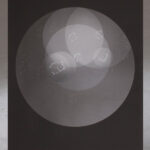
Projecting a New Perspective – Interpreting Emerging Trends

The Importance of Authenticity
In my previous post, I wrote about why people love data so much. I also wrote briefly about the importance of visualising that data clearly so that the content is more likely to attract the readers. This week, we will be taking a closer look at different examples of data visualisation, how data is collected and also the authenticity of the data presented.
In this week’s lecture, one of the examples brought up was that of the National Census of 2011. Censuses offer a detailed picture of what is going on in the country, how the population is doing as well as an economic overview. However, being a large-scale data set, there are multiple instances where data can be taken out of its context. Political propaganda is a typical example of data manipulation. Similarly, data journalism can often be biased. Even the so-called ‘truth checkers’ are inclined towards one side. Whilst their main goal is to unearth the truth about data publications that may be manipulated, the final product can be enhanced to make discrepancies more evident.
Another important point mentioned in the lecture is the importance of knowing how data is being complied. Linking to my previous point, data compilation should be taken into consideration for the reader can deduce whether the content presented is neutral and factual rather than biased. This reminds me of the political propaganda whenever there is an election. It is a time were headlines are contradictory, claims and percentages popping everywhere.
Visualising Data – Some Background Information
In a nutshell, data visualisation is a graphical representation of data. The data can be about anything. Graphs and information graphics are some of the types of visuals used to interpret the data. Some consider it an Art, others see it as Science. However, the common goal is to communicate the information clearly and efficiently. This means that aesthetics and functionality are equally important in order to convey effective results.
Surprisingly, there is no documentation that discussed the history of data visualisation. In spite of that, the first documented form of data visualisation if the Turin Papyrus Map, dating back to 1160 B.C. This map depicts the spanning of various geological resources and provides information about access to these resources. Similarly, Ancient Egyptians used maps with co-ordinates, similar to modern day latitude and longitude, that mapped different settlements, dating back to 200 BC. In addition, Ptolemy’s latitude and longitude referencing of the Earth was pivotal for navigators until the 14th century.
Different Types of Data Visualisation
The common focus for visualisng data is to present information. However, information designers utilise various approaches when going about a project. Experts split information display into two major parts, namely tables and graphs, Moreover, according to the article Data Visualization: Modern Approaches (2007), data visualisation is categorized into 7 major subjects. These are:
- Articles & resources
- Displaying connections
- Displaying data
- Displaying news
- Displaying websites
- Mind maps
- Tools and services
Today, it can also be said that there are 10 major types of data visualisation, which are:
- Bar/line graphs: commonly used for comparison of values against time periods.
- Stripe graph:
- When displaying averages, line charts are more likely to be used.
- Pie charts: used to show ‘parts of whole’ data. Very often data is presented in percentages.
- Histograms: used to show frequency.
- Scatter plots: often used to depict correlations between different datasets.
- Network: these have varied uses. Commonly used for data clusters, links between same clusters, deduce important variables and spot rogue data.
- Stream graph: similar to the line graphs, these are used to compare single column datasets.
- Probability trees: different to other forms of data visuals, probability trees are used to show possible outcomes within a given situation.
- Gantt charts: used to show progress over a set period of time.
- Heat maps: used to analyse risk and ‘hot-spots’ in a set area.
In this day and age, data is flowing everywhere. We are exposed to all sorts of data and information and we are bound to come across some of it that may not be exactly legitimate. As people, we should look at data with a pinch of salt – it is good to know the source. As graphic designers, it is also important to communicate information effectively and do our utmost not to be biased by subjective opinion. Before I conclude, I also would like to share a book I bought recently: Raw Data by Steven Heller and Rick Landers. It is a book that showcases the sketches and work of over 150 information designers. Flipping through its pages gave me a couple of ideas what I can do for this week’s workshop challenge.






5 Comments
AffiliateLabz
Great content! Super high-quality! Keep it up! 🙂
Denise Hooten
I believe you have noted some very interesting details , thankyou for the post.
coconut oil for hair
Wow! Finally I got a blog from where I be able to actually get helpful facts regarding my study and knowledge.
Emmy Brumer
Awesome write-up. I’m a regular visitor of your web site and appreciate you taking the time to maintain the nice site. I will be a frequent visitor for a long time.
Lindsay
Oh hi Emmy. Thanks for the feedback. Much appreciated. :))